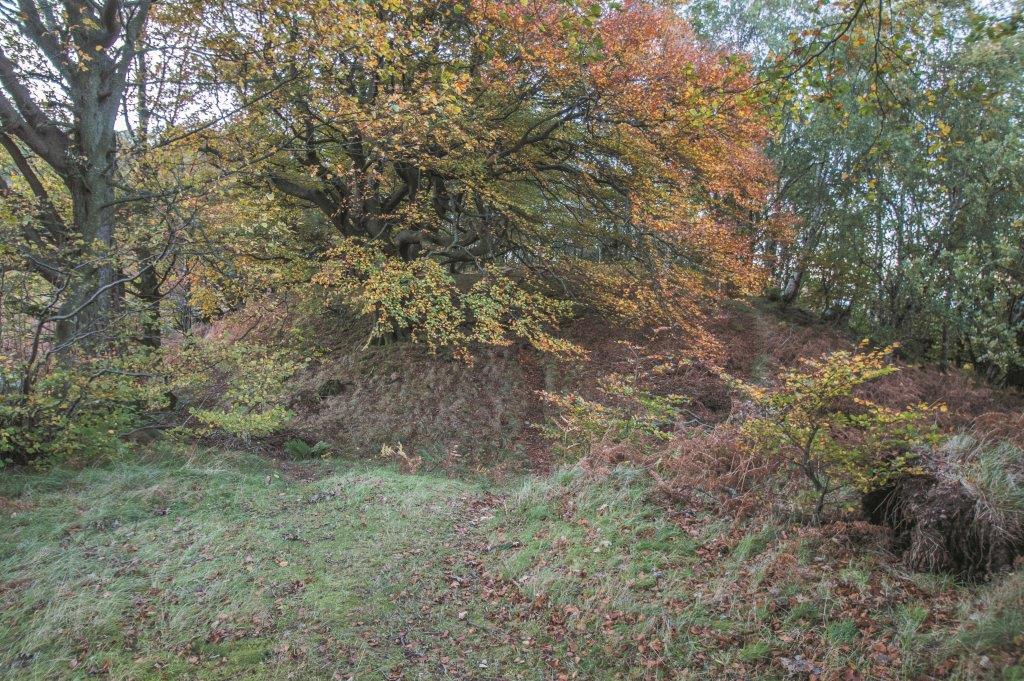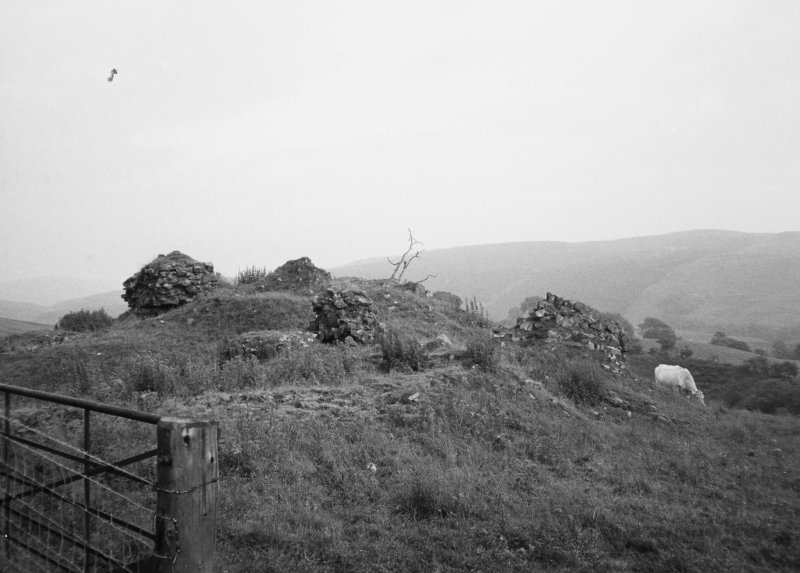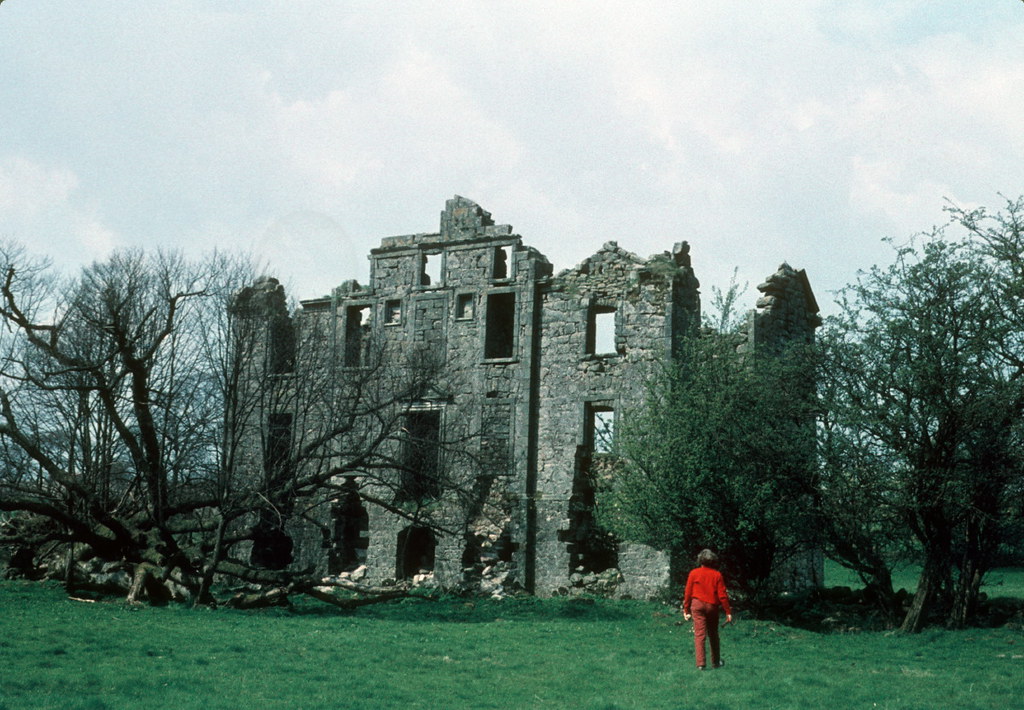Fintry Past
Six Castles
Dunbeg Motte
Dunbeg Motte or fort lies below Dunmore on a hill nearer the village. It may have been built around the early 1200s and may have been a residence of Maldouen, 3rd Earl of Lennox who died aged 33 in 1250. There was no Fintry village as we know it then. This is likely the first castle in Fintry’s valley. It is an oval mound enclosed by a broad ditch roughly 100 x 120 feet. It would have probably been a wooden fort with palisade defences and clearly commanded a full view of anyone entering the valley from either end.

Culcreuch Castle
Next in sequence in 1296 and was owned by the Galbraiths. Not to be confused with the Grahams who later built Fintry Castle! (See the separate page about Culcreuch for more information.)
Fintry Castle
Fintry Castle was built in the late 1400s by Sir Robert Graham of Belargus. (Belargus was in Angus, now long disappeared.) He fought at the battle of Sauchieburn, Stirling in 1488. For this he was given the title Earl of Montrose and so began the great connection of this valley with the estates of Montrose. He was killed at the battle of Flodden in 1513. The home of Fintry was significant as the Graham family took the name to Dundee, there building another Fintry Castle and estates.
Fintry Castle is now sadly a diminishing pile of stones. It is on the left hand side, over the Gonachan bridge and opposite Camallt House, also known as Woodfoot. By 1724 it was referred to as the “Old Ruinous Tower of Fintree.”

Sir John de Graham's Castle
The Grahams had several castles in the area. Sir John de Graham’s Castle is now a magnificent earthworks over looking the Carron Valley and with good signalling views to the other forts and castles down the line. It is a rare example of a square moated castle which would have had access over a wooden bridge. It had four ranges of buildings round a central square. It supplemented its larder with a giant man-made fishpond. Likely begun in the 1200s.
This was the edge of the great Royal hunting forest known as King’s Park extending out from Stirling Castle. Here royalty would certainly have enjoyed great sport and many a stay-over in their five star rural hideaway.

Balgair Castle
Balgair Castle was much more likely a very old country house, originally owned by the Galbraith family. All that is left is a ruined frontage. It was called Balgair Castle by locals and this was the previous name of the re-named Campsie Glen Holiday Park , a mile north of Fintry on the Kippen road. In the middle-ages there is no doubt that there was a large village and thriving community here at Balgair.

Balglass Castle
This is least known of Fintry’s castles. It was right on the edge of the parish and there is seemingly nothing left of the original building other than a date marked stone (1602) now in the Balglass farmhouse wall. It also has a name Baron’s Place and is mentioned in a charter from James III in 1486, when it was owned by the Stirlings, then the Houstouns. It originally included the estate of Provanstoun.
